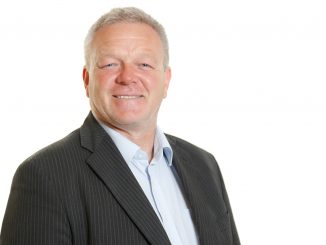By Tony Morcos, President – ACM Magnetics
A few weeks ago I attended the joint Magnetics 2014 / Motor & Drive Systems 2014 Conference in Orlando, FL. It was a pleasure to see many old friends and colleagues, some of whom I have known since I was a bushy-haired undergraduate electrical engineering student at the University of Dayton in the mid-1980s. This brief nostalgia kick triggered my reflections on how the permanent magnet industry has changed over the past 30 years, and how these changes foreshadowed the overall changes in the American & European manufacturing economies.
My formal introduction to the permanent magnet and electric motor industries was at the 1985 Rare Earth Permanent Magnet Conference, hosted by the University of Dayton Magnetics Lab. The “energy conversion” industry (loosely defined as the permanent magnet, power electronics, motion control and power generation areas) at that time was “mature” – all of the main technical & management personnel were middle-aged and elderly white men. China was not part of the equation – yet. The “sexy” areas of electrical engineering at that time were digital electronics and software engineering, and most all of my American peers went that direction in their careers, with some making a fortune in the internet dot-com boom/bust/boom cycles in the ensuing years.
I pursued a vocation in the design of permanent magnet devices and electric motors and was fortunate enough to have received personal mentoring from magnetic-circuit-design experts such as Herb Leupold, Klaus Halbach, Rollin Parker, and Werner Baran, amongst others. In 1985 I believed that the relative newness of high-energy rare earth permanent magnets, especially with the introduction of NdFeB in 1984, would revolutionize the motion control and power generation industries, leaving me with ample employment opportunities and bringing glory to the neglected energy conversion industry. The employment opportunities were there, but the glory wasn’t, and the new crop of American engineers again chose sexier fields.
With the discussion of the pending 42V automotive standard in the mid-late 1990s, I again predicted a surge in American engineering students entering the energy conversion arena. But this standard died on the vine, and the reinforcements never arrived. Throughout the 1990s I noticed very few young, American electrical engineers were pursuing careers in these nuts & bolts industries, instead opting for software/firmware/digital electronics careers. And the energy conversion industry aged.
Again, within the last 10 years or so, I believed the T. Boone Pickens windpower craze might energize the American energy conversion industry, but Mr. Pickens’ wind farms never materialized, and the Chinese and Europeans now dominate the industry, with negligible interest from young American electrical engineering graduates.
In the meantime, China was carefully planting its seeds to take over the permanent magnet, motion control and energy conversion industries, and by about 2005, they had completed their efforts, driving most of the North American and European magnet manufacturers and commodity motor producers out of business, and driving most young American and European electrical engineering graduates into other specialties. Over the past 10 to 15 years, there have been many young and creative male and female Chinese engineers and scientists entering and leading the energy conversion industry, with very little American and European input.
At the 1985 Rare Earth Permanent Magnet Conference in Dayton, OH, I was one of the youngest American engineers at the conference. At the Magnetics 2014 Conference in Orlando, FL – nearly 30 years later – I was still one of the youngest American engineers at the conference. This does not bode well for the future of the energy conversion industry in the United States of America.
 About the Author
About the Author
Tony Morcos has more than 30 years of experience in permanent magnet manufacturing and electric motor/electromagnetic device design and manufacturing. Mr. Morcos has a B.S. and M.S. in Electrical Engineering from the University of Dayton. He can be reached at tony.morcos@acm-magnetics.com.


